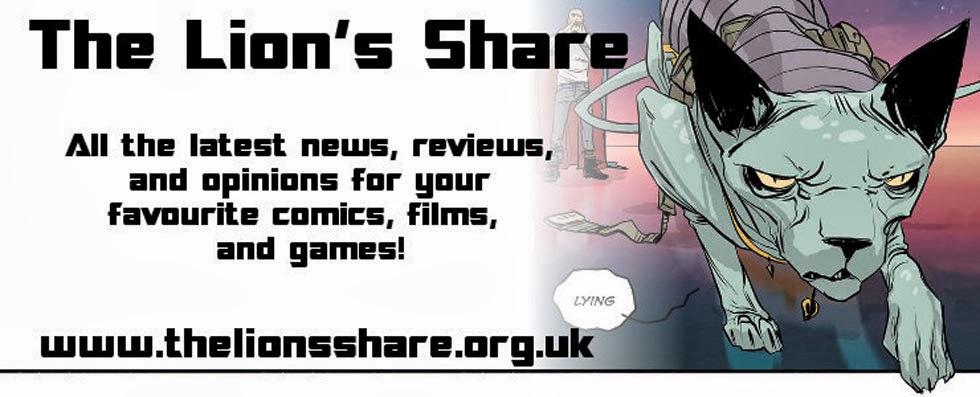John W. Campbell’s 1938 Novella, ‘Who Goes There’ will shortly see the release of its third cinematic adaptation in the form of Mattijs van Heijningen Jr.’s ‘The Thing’ - the long delayed prequel to the 1982 John Carpenter film. Although the release date is tantalisingly close, the production has been the subject of intense speculation due to delays, re-shoots and the perhaps inevitable comparisons to Carpenter’s ‘original’.

Despite the degree of scepticism surrounding the project, my own excitement is starting to build for the December release date, thanks in part to positive buzz from a friend who caught an extensive preview in New York last year (That was me! BF). At the same time the wait has also led me to explore the origins and source material behind the new project and its immediate forbear, discovering along the way some classic genre fare I might otherwise have overlooked.
Firstly, for all the debate over the various film versions, the original story is worth seeking out as a classic in its own right. In many ways typical of short fiction from sci-fi’s Golden Age, ‘Who Goes There’ tells the story of a group of scientists in the Antarctic who discover a crashed spaceship and unwittingly unleash its insidious, shape-shifting occupant. Part mystery, part thriller, the piece has a colourfully drawn cast of characters, with an interesting edge thanks to small hints of H.P. Lovecraft in its D.N.A. With its sparse setting and small cast of characters, it is a deceptively simple tale, but ripe for cinematic adaptation. Although Campbell would become more influential as editor of ‘Astounding Science Fiction’, ‘Who Goes There’ is rightly hailed as a classic example of the genre.

Released the same year as hugely influential genre films ‘The Day The Earth Stood Still’ and ‘When Worlds Collide’, Howard Hawk’s ‘The Thing from Another World’ (Chris Nyby. 1951) is often overlooked. A lot of this has to do with John Carpenter’s hugely popular 1982 remake, but it’s interesting to note that Hawk’s film was the highest grossing genre film of that year. Watching the original, it becomes easy to see why the film was a hit with audiences, even given its rather impressive competition.
One of the first things that struck me about the film is the atmosphere. Through rather subtle dialogue and visuals, the first twenty minutes or so is a master class in tension building, as the military are alerted to a plane crash and head to the Arctic research station to investigate. These opening scenes rely very little on music or more obvious emotional cues, letting the isolated setting and suggestion do the hard work.

Once the mysterious pilot is brought back to camp, frozen in a block of ice, the action unfolds rather slowly at first, but there is plenty of room for character moments and establishing the film’s key players. One thing that struck me was that although the film establishes several characters that would soon become genre clichés - including the gruff military type, the reckless journalist and the misguided scientist - these characters, through sympathetic dialogue and easy chemistry, avoid seeming hokey.
Not once does the Robert Cornthwaite’s scientist Dr. Carrington come across as a cipher, even with his overriding desire to preserve the "Thing’s" life at all costs. It is also refreshing to see the military and journalist characters show each other a degree of respect that would be almost unheard of today. As the sole female of note, Margaret Sheridan, as Dr. Carrington’s secretary, has little to do by way of action but it is gratifying to see that the role of women in cinema was subtly changing. Sheridan’s character, despite being largely consigned to the sidelines, does at least hold her own against Kenneth Tobey’s Captain Hendry, and her presence is more than simply a source of screams.

As for the "Thing" itself, there is a slightly disappointing move away from Campbell’s vision of a shapeshifting creature (so gruesomely realised in Carpenter’s film) that absorbs and imitates its prey in favour of a slightly lumbering post-Boris Karloff creation. Thankfully, the director takes the approach that less is more, and the brief snatches of the monster - first introduced simply through character’s crazed description and some brilliantly atmospheric use of harp and theramin in Dimitri Tiomkin’s sparing score - provide some genuine scares. Although the nature of the creature as a highly evolved vegetable form of life provides a good source of humour at the film’s midpoint, it nevertheless is a convincing threat, and as its need to reproduce using blood is slowly realised, its threat becomes all the more powerful. Kudos to the filmmakers for making what is essentially a giant vampire carrot genuinely scary.
Overall, this is definitely a film reflective of it’s time, but its nonetheless quite clearly a hugely influential piece of film making. Cited by John Carpenter as a direct inspiration for his own film, I was struck too by the parallels in both character and plot that would come to define genre films as a whole, in particular the Alien series. Although un-credited, many sources cite Hawk as de-facto director and screen writer on the project, but whether or not this is a masterwork from a hugely versatile and influential director, it stands on its own as one of the very cornerstones of science fiction film making.
One to watch, whatever your thoughts on the remake. Plus, if John Carpenter rated it, its got to be worth a look.
Robert Barton-Ancliffe will turn his attention to Carpenter's offering next week.

No comments:
Post a Comment